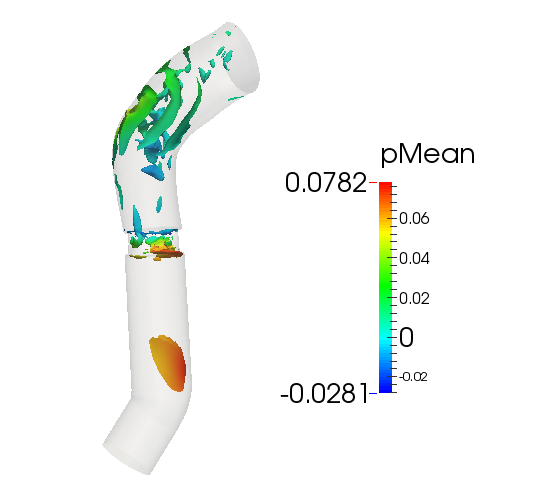Large-eddy simulation of transitional blood flow

Instantaneous vortical structures downstream of a stenosis identified by the isosurface corresponding to the negative contour of the λ2-criterion.
Over the last decade, the study of blood flow through computational simulations has gained considerable importance. This approach offers the advantage that it enables the detailed charaterization of the transitional flow regime downstream of an aortic stenosis. Indeed, quantifying the influence of stenosis on blood flow is of crucial importance for diagnostic purposes and for choosing the appropriate treatment for the patient. In this Master thesis, large-eddy simulations (LES) are carried out using the already implemented immersed boundary method (IBM) in OpenFOAM. The work focuses on three parts:
- Adaptation of the forcing term of the IBM such that a rigid wall is modeled.
- Implementations of simulations with one LES model for one realistic geometry of aorta with stenosis.
- Validation of the numerical framework with data from experiments and direct numerical simulations (DNS).
Tasks
- Literature review about hemodynamics, finite volume method, immersed boundary method.
- Familiarize with the flow field solver and post-processing tools (OpenFOAM, ParaView).
- Perform simulations of blood flow using the ETH Euler supercomputer.
- Compare the results with experimental and DNS data.
Remarks
The candidate must have an interest in numerical simulations. Basic knowledge in computational fluid dynamics is an asset.
Contacts
- Pascal Corso () (advisor)
- Dr. Utku Gülan () (advisor)
- Prof. Dr. Markus Holzner () (advisor)
